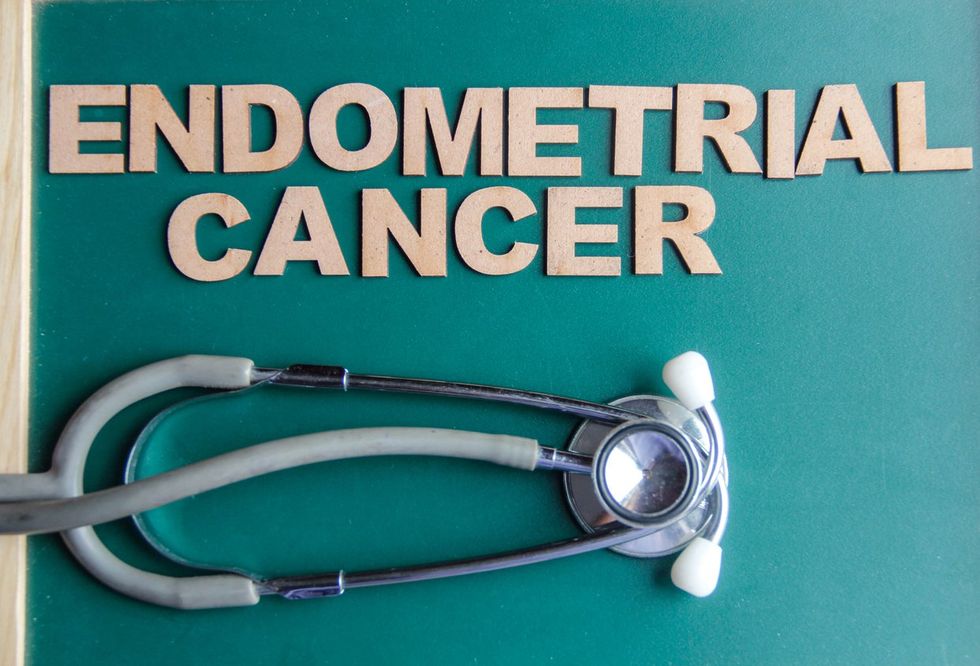Table of Contents

You may not hear about endometrial cancer often, but it’s the most common gynecological cancer affecting women and people assigned female at birth (AFAB) in the United States. This type of uterine cancer, which is cancer of the uterine lining, causes symptoms in early stages — the most common of which is vaginal bleeding. Because it has symptoms, endometrial cancer is often found early, when it’s easier to treat.
While early-stage endometrial cancer is highly curable, health disparities do exist. Uterine cancer deaths are increasing for everyone, but even more so for Black women. In fact, Black women are not only more likely to get endometrial cancer, but they’re also more likely to die from it.
Read: Why Are Black Women More Likely to Die From Endometrial Cancer? >>
Learn more about endometrial cancer, who’s at risk and what treatment options are available.
What is endometrial cancer?
The uterus is made up of different tissue layers. The inner lining, or endometrium, is the layer that lines the uterus and is shed during your period. Endometrial cancer grows in this lining and is the most common type of uterine cancer.
No one knows for sure why some people get endometrial cancer, but researchers think it may have to do with hormones — specifically, estrogen. Estrogen is what stimulates the uterine lining to thicken during the menstrual cycle in preparation for a potential pregnancy. An overgrowth of this lining is what could lead to cancer.
You can have different types of endometrial cancer. These include:
- Adenocarcinoma, the most common type
- Uterine carcinosarcoma
- Squamous cell carcinoma
- Small cell carcinoma
- Transitional carcinoma
- Serous carcinoma
Are there other types of uterine cancer?
Sometimes the term “endometrial cancer” is used interchangeably with “uterine cancer.” This is because endometrial cancer makes up about 95% of uterine cancers. But technically, endometrial cancer is one type of uterine cancer.
Uterine sarcoma is the other type of uterine cancer that occurs in the myometrium, which is the muscle wall of the uterus. While endometrial cancer is usually treatable with surgery, uterine sarcoma is more aggressive and difficult to treat.
What are the stages of endometrial cancer?
Staging helps your healthcare provider (HCP) know how much cancer is in the body. It also helps them figure out which treatment is right for you. There are four stages of endometrial cancer:
- Stage 1: The cancer is located in the uterus
- Stage 2: The cancer is in the uterus but has also spread to the cervix
- Stage 3: The cancer has spreads outside of the uterus and may be in the lymph nodes in the pelvis but is still located in the pelvic area
- Stage 4: The cancer has spread, or metastasized, to other parts of the body such as the bowel, bladder or abdomen
Cancer can also be categorized with a grade from 1 to 3, with grade 3 being the most aggressive, meaning it is more likely to spread quickly.
What are the risk factors for endometrial cancer?
You are at risk for getting endometrial cancer as long as you have a uterus. But there are some factors that can increase this risk, including:
- Being older than age 50, especially if you start menopause after age 50
- Having a higher body weight or cycling between losing and gaining weight
- Taking estrogen without progesterone during menopause as a hormone replacement
- Infertility or difficulty getting pregnant
- Getting your period earlier than age 12, especially if you also start menopause at a later age (because this means you are being exposed to estrogen for longer)
- Family history of endometrial cancer
- Having had certain cancer treatments, such as tamoxifen or pelvic radiation therapy
What are the symptoms of endometrial cancer?
Often, endometrial cancer can be diagnosed in early stages because its symptoms prompt people to see their HCP. The most common symptom is vaginal bleeding. This includes bleeding between periods, heavy periods and post-menopausal bleeding — including spotting.
You might also notice symptoms such as:
- Painful sex
- Pelvic or abdominal pain
- Vaginal discharge after menopause
Watch: How Endometrial Cancer Is Diagnosed >>
What are the treatments for endometrial cancer?
Treatment for endometrial cancer depends on several factors, including the cancer stage.
Your HCP may refer you to a gynecologic oncologist, which is a doctor who has advanced training in reproductive cancers. You may have more than one treatment type, which can include:
- Surgery: The most common treatment for endometrial cancer is surgery that removes the uterus, known as a hysterectomy. It may also involve removing the ovaries and fallopian tubes, cervix, part of the vagina, or lymph nodes.
- Chemotherapy: Uses medication to kill cancer cells or stop them from dividing out of control.
- Radiation therapy: Uses high-energy X-rays to kill cancer.
- Targeted therapy: Uses medications, such as monoclonal antibodies, to target and destroy cancer cells.
- Hormone therapy: Used in advanced stages of cancer or cancer that has come back. Progesterone or medications that mimic progesterone, known as progestins, are the most common hormone therapy for endometrial cancer.
If you’re experiencing unusual vaginal bleeding, don’t hesitate to talk with your HCP. While bleeding doesn’t mean you have cancer, it’s important to advocate for yourself to find the cause. Endometrial cancer can be found in early stages and is highly curable. When cancer is diagnosed, treatment can begin right away.
This educational resource was created with support from Karyopharm.
From Your Site Articles
Related Articles Around the Web


